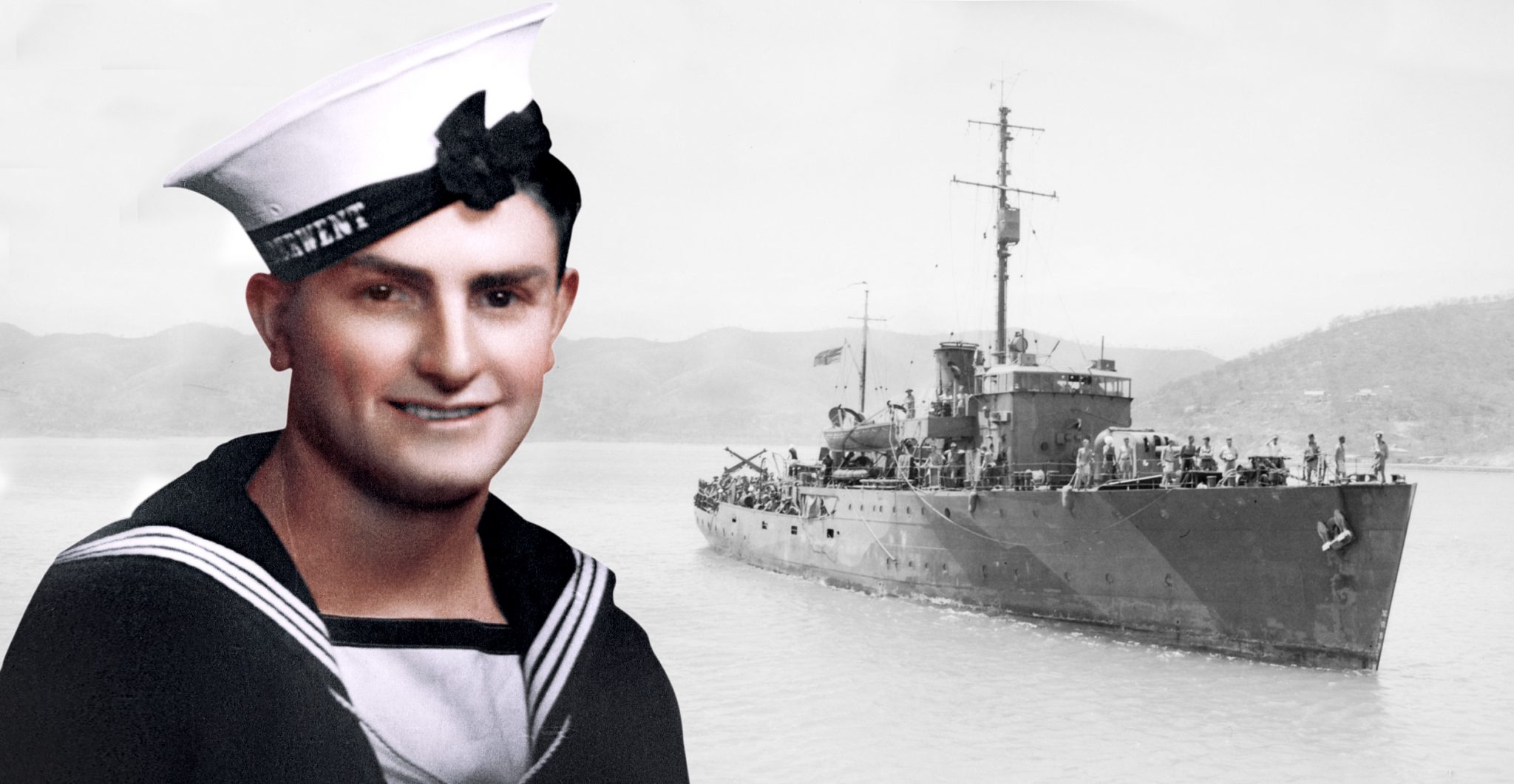Personal sacrifice has always been the pinnacle of heroic acts in war. When a man is ready to give his own life in order to save the lives of his brothers-in-arms, it is a sight to admire and pay great respect to. One out of many such endeavors which happened during WWII is most definitely the valorous act of an Australian seaman, Edward “Teddy” Sheean.
Sheean was born into a family of fourteen children in Lower Barrington, Tasmania, in 1923. In 1941, he joined the Australian Navy. Five of his brothers had already enlisted in the Armed Forces and Teddy wanted to follow in their footsteps, as the country was facing its worst time of peril.
He was stationed on the Bathurst-class corvette HMAS Armidale as an Oerlikon anti-aircraft gun loader when his wartime adventure began. Little did he know that he would be the man whose courage and sacrifice saved the lives of his fellow sailors.
The first year of the war went rather dully for Teddy Sheean, as HMAS Armidale was bestowed upon routine escort duties just off the coast of Australia and rarely encountered the Japanese. But in November 1942, all of that was about to change.
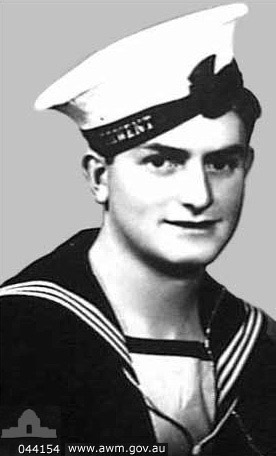
At that time, a small Australian commando unit was stationed on Timor, a Pacific island under the colonial rule of both the Dutch and the Portuguese, located just north of the Australian coast. The island was under threat of Japanese invasion and HMAS Armidale, along with ships Kuru and Castlemaine, was sent to evacuate the Aussie troops, together with some 150 Portuguese settlers and 190 Dutch soldiers who were stationed on the island.
The invasion of the island was a direct threat to the Australian mainland and the operation was of utmost importance for securing the Indonesian archipelago.
The garrison was to be replaced with 50 Dutch guerrilla fighters who would engage in sabotage operations against the Japanese invaders until a counter-attack could be organized. Armidale and Castlemaine were sailing together and were supposed to meet up with Kuru in order to proceed towards Timor.
Due to bad weather, Kuru’s arrival at the port of Betano on Timor was delayed for three hours. Armidale and Castlemaine failed to meet up with the third ship and were in the meantime harassed by Japanese aircraft. First, a single fighter started strafing and bombing the corvettes. The commanding officers of both Armidale and Castlemaine agreed that the attacks were about to become more frequent and, since they had failed to meet up with Kuru, they decided to apply evasive maneuvers.
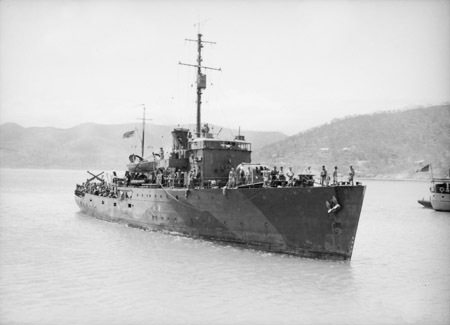
Their predictions quickly became very true ― a squadron of Japanese bombers was already on their tails. Two more attacks soon followed, bombing and strafing the ships with machine guns. Strangely enough, both vessels came through with minor damage and without casualties.
In the meantime, Kuru had already reached Betano, collecting 77 of the Portuguese refugees and one critically wounded Australian commando. The ship set sail for Darwin, realizing that they had failed to accomplish the rendezvous with the other two corvettes. By a stroke of luck, they managed to spot the ships on their way back and exchanged a portion of Portuguese passengers with HMAS Castlemaine.
HMAS Armidale and HMAS Castlemaine received orders to continue the operation on their own. Then suddenly, the Japanese bomber squadron was inbound. The ships went their separate ways and the Japanese pilots decided to follow Armidale. The corvette proved to be easy prey for the Imperial bombers, who dispatched two aerial torpedoes and achieved a direct hit.
The situation aboard Armidale was clear ― abandon ship. In the midst of the growing panic and confusion, Ordinary Sailor Teddy Sheean was assisting the evacuation, selflessly running back and forth in order to save as many as his fellow sailors he could. During this action, he was shot twice with 7.7×56mm bullets coming from a Japanese fighter’s machine gun.
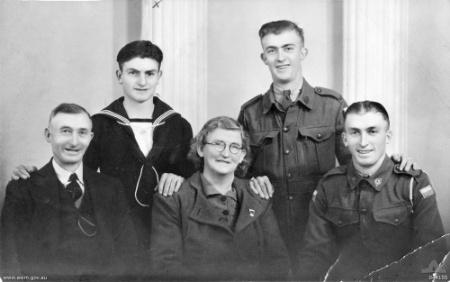
He was badly wounded, receiving a shot in the back and one in the chest. Sheean decided to go down with the ship. Strapping himself into the aft Oerlikon 20 mm cannon, he fired away, shooting a Japanese bomber down and relentlessly gunning the harassing aircraft as his comrades-in-arms were loading the rescue rafts.
One sailor’s testimony put his actions into words, which later served for his posthumous decorations:
“During the attack, a plane had been brought down and for this, the credit went to Ordinary Seaman Teddy Sheean. Teddy died, but none of us who survived, I am sure, will ever forget his gallant deed … When the order ‘Abandon ship’ was given, he made for the side, only to be hit twice by the bullets of an attacking Zero. None of us will ever know what made him do it, but he went back to his gun, strapped himself in, and brought down a Japanese plane, still firing as he disappeared beneath the waves.”
Sailors reported that they could still see tracer bullets raging up towards the air even when the ship was well underwater. Sheean kept firing until he drowned, his stiff dead finger still holding the trigger.
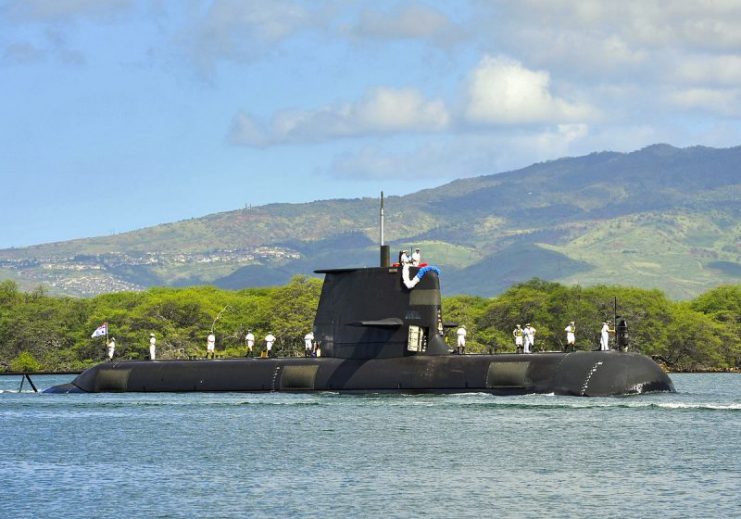
Armidale‘s commanding officer, Lieutenant Commander David Richards, made a posthumous mention in dispatches about the “bravery and devotion when HMAS Armidale was lost,” dedicated to Teddy Sheean.
The story of Sheean’s valor and sacrifice remains legendary within the ranks of the Australian Navy. A Collins-class submarine was named after him ― HMAS Teddy Sheean ― adopting the motto which best illustrates his determination that shines as an example for others ― “Fight on!”
